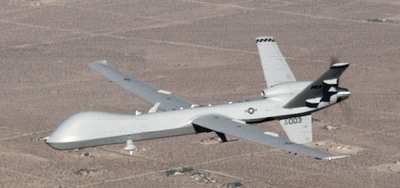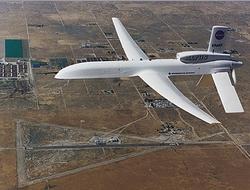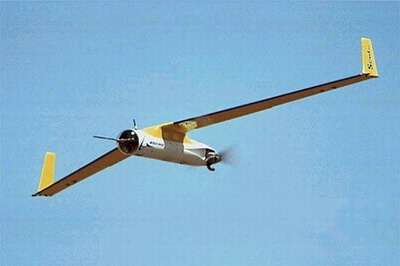US Army Colonel Says They Should Be Now
The Army's unmanned aerial vehicles are doing just fine
operating in the shared airspace over the Middle East... so why
slow down efforts to integrate them into the national airspace here
at home?

That's the word from Colonel Don Hazelwood, head of the US
Army’s unmanned air system acquisition program office -- who
told Flight International recently there are plenty of reasons to
accelerate the use of drones over the USA.
"Last night on the news there was a missing person, a child
missing," Hazelwood said at the recent AUVSI Unmanned Aerial
Systems North America conference in Orlando, FL. "Could we not put
up UAVs to go out on search missions? Could we not go out and help
the forestry department, instead of giving them 2000 soldiers with
shovels, could we not send a few UAVs and pinpoint where the
hotspots are [in forest fires] and assist them in their tactical
operations on where they send out their bulldozers to build
firebreaks? Utilize technology?"
 But if that was good
news for UAV developers, Hazelwood did drop the other shoe...
chiding manufacturers for not paying enough attention to "aviation
discipline and culture."
But if that was good
news for UAV developers, Hazelwood did drop the other shoe...
chiding manufacturers for not paying enough attention to "aviation
discipline and culture."
"To fly in the national airspace, to get anyone in the [US
military] to stand up and go toe to toe with the FAA, we all need
to understand what flying in the national airspace means; what
aviation culture and discipline brings to meeting those
objectives," he said.
Hazelwood also says the Army can't justify entering serious
talks with the FAA about the use of drones in the national airspace
until at least some UAV makers improve the equipment itself so that
it can safely operate over the United States.
It's a pressing problem. In the next five years, Hazlewood
expects some 230 UAV companies will be trying to test more than
10,000 aircraft here in the US.
UAV's now make up about 80-percent of the total number of
aircraft in the Middle East theater of operations, he says. Those
drones still stationed in the US should have better things to do
than counting cows at Fort Campbell, KY.
But they're stuck with such tasks, according to Hazelwood, until
the military can prove UAVs are safe to co-mingle with manned
aircraft in the skies over America -- despite what he says is a
proven track record in such hostile environments as Iraq.

"[The Army] goes 24/7, 365 days a year [and] intermingles armed
aircraft, medivacs, commercial aircraft, FedEx, and 20-30 UAVs
everyday, all day," said Hazelwood. "It has never had a UAV
accident. It has had some close calls.
"So when the question comes up 'can we fly in Class B
airspace'?" Hazelwood continued. "Well yes, we do it every day, 365
days a year, 24 hours a day. And isn't Iraq international airspace?
And isn't international airspace more challenging than national
airspace? So I am not sure that I buy the argument that we
can’t fly in the national airspace today. Maybe we
don’t meet the stringent FAA requirements to fly in Class B,
but we do fly in Class B airspace every day in Iraq, and in
international airspace."

Of course, pilots and their advocates -- including the Aircraft
Owners and Pilots Association -- are still more than a little wary
of unmanned aircraft flitting around the sky because, unlike manned
aircraft, they don't have the ability to see and avoid other
traffic.
 Airborne-Flight Training 05.09.24: ERAU at AIAA, LIFT Diamond Buy, Epic A&P
Airborne-Flight Training 05.09.24: ERAU at AIAA, LIFT Diamond Buy, Epic A&P ANN's Daily Aero-Term (05.07.24): Hazardous Weather Information
ANN's Daily Aero-Term (05.07.24): Hazardous Weather Information Aero-News: Quote of the Day (05.07.24)
Aero-News: Quote of the Day (05.07.24) NTSB Final Report: Cessna 150
NTSB Final Report: Cessna 150 Aero-News: Quote of the Day (05.08.24)
Aero-News: Quote of the Day (05.08.24)






